Regular readers might have spotted numerous references to the Marin El Roy on BikeRadar, whether that be photos popping up with parts for First Look Friday bolted to it, many mentions in the BikeRadar Podcast, its review, accounts from enduro racing, or regular appearance in MBUK magazine (it is, after all, my long-term bike).
Needless to say, I love the El Roy. So much so that, despite a garage and workshop full of lust-worthy full-suspension trail and enduro bikes, I took the El Roy on my summer holiday to the Alps.
Yes, for two weeks packed with full-on alpine riding, I eschewed new-fangled rear suspension and packed my non-springer into the back of my van and headed to Briançon for a six-day traverse of the Alps all the way to the Med, with my buddy Sam from BikeVillage, dubbed the AlpPacker, before a week back at his place hitting up some alpine tech near Les Arcs.
Ten rides later, I emerged from the mountains with my wrists just about intact. I certainly learnt a few things. Five things, in fact.
1. Modern bikes are great, even without suspension
While I might be contractually obliged to have a healthy interest in new bike tech, looking back over the years I’ve ridden in the Alps, and the bikes I’ve done it on, makes me really appreciate just how good things are now.
Despite having no give at the back of my bike, the El Roy was able to handle absolutely everything in its path.
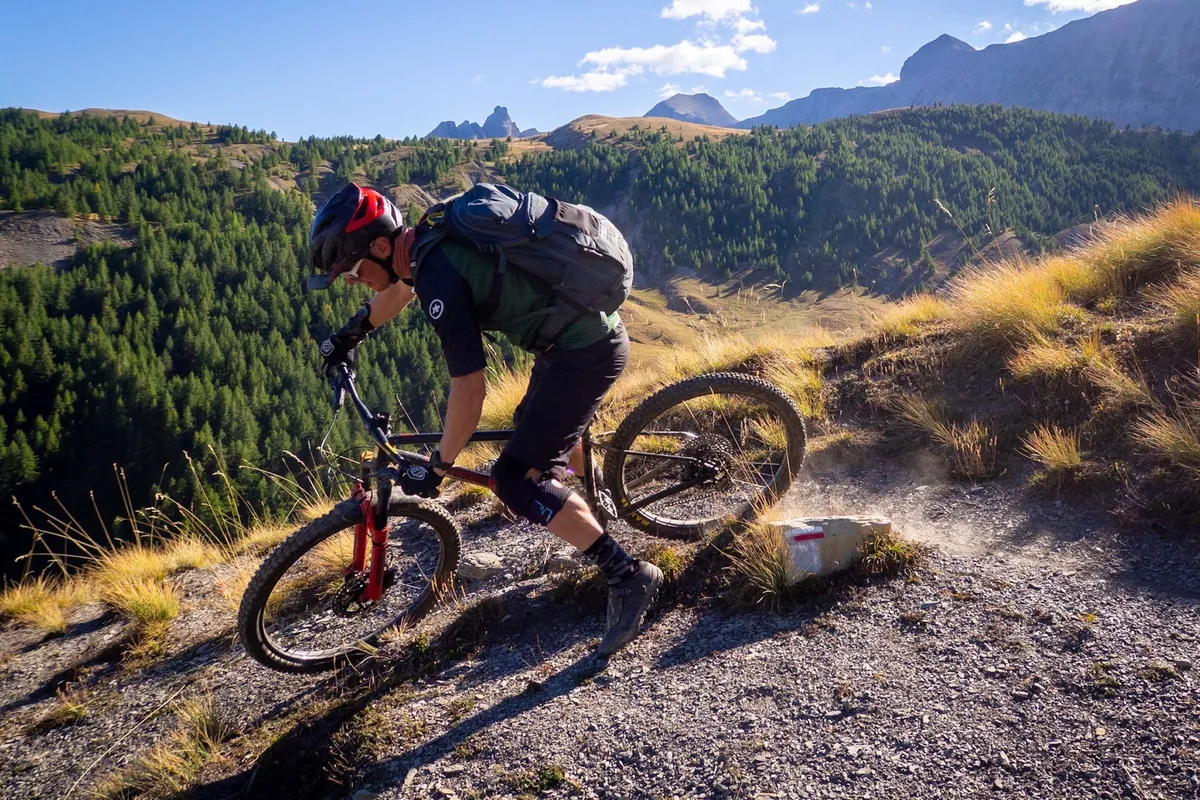
When long, low and slack geometry first emerged, many wondered whether they’d still be able to get round the tightest of switchbacks. Turns out, it’s my technique that’s holding me back, not the bike.
Rocky goat tracks are the litmus test for the trail bike and its components. Despite riding everything as fast as I could, I only punctured once, on one of the rockiest tracks I’ve ridden in a long time – and that’s with tyre pressures erring on the side of grip and comfort, rather than rocky caution.
Yes, a sturdy DoubleDown Maxxis tyre might weigh the same as a small family car, but you can give them as much abuse as you like.

Then there are drivetrains.
I remember riding 1x drivetrains back before they were a ‘thing’. Chainguides were an absolute necessity, chainslap was deafening and shifting performance declined with every kilometre ridden.
SRAM’s electronic AXS drivetrains might not appeal to purists (that’s another column), and the price isn’t exactly bargain-basement. But the ultra-reliability they provide, along with a clutch that quietens everything down and keeps everything super-secure is mind-blowing.

2. Tune-up your techniques
If, like me, you get your kicks from edging down tight, twisty natural trails, there are tonnes of techniques that will help get you down as smoothly as possible.
While we have some tight corners in the UK, there can’t be many places with quite so many densely packed tight switchbacks. There’s definitely a technique to getting them right – looking where you’re going, rotating your hips to point with your belly button, and trusting the front wheel to stick when it feels as though you’re about to be projected over the front.

But by god, it feels good when you get it right!
When it comes to rattling down an Alp on a hardtail, faster is almost always better. Yep, you've got to be fast to be smooth! The trouble comes when you get tired, as you end up going slower, which makes everything harder! See lesson number three!
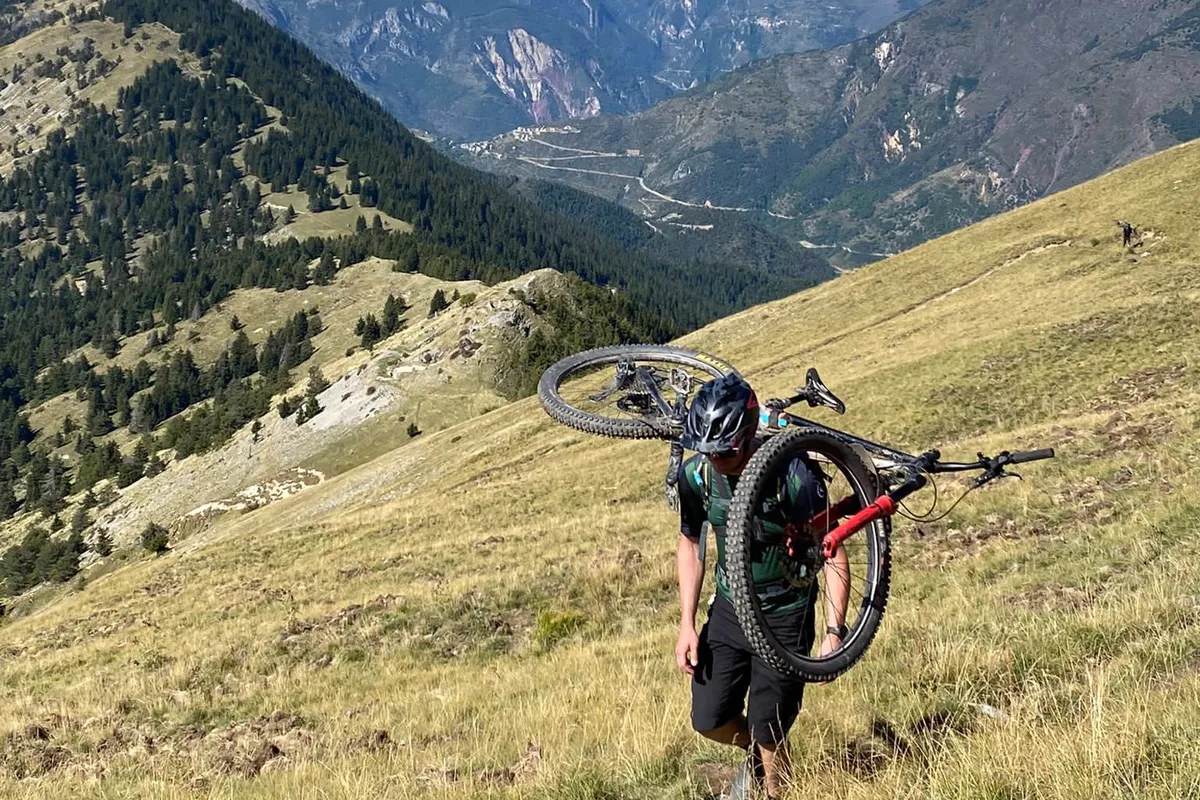
There are also the less fun techniques to get a handle on. Carrying a bike in the Alps is almost certainly going to get you places you otherwise wouldn’t manage. And there's a definite technique to getting it right. Needless to say, I carried my bike a lot!
- Stand on the non-driveside of your bike with the left-hand crank pointing down.
- Crouch down and grab the crank and the fork lower.
- Lift over your head, and rest the down tube across your shoulders.
- Stabilise by holding fork and/or crank, with the weight either on your shoulders or the top of your pack (my preferred location).
- To get it off, lift back over your head, and place the rear wheel on the ground, and then the front.
What it takes to be a mountain bike guide
Sam Morris has been a professional mountain bike guide in the French Alps for over 20 years. In that time, guiding has gone from a summer escape for a lucky few to a fully professional role.
Sam (the man behind my trip to the Alps) has built one of the most respected guiding companies around and, having become involved in efforts to professionalise the industry, almost by accident became the President of the European Bike Guides organisation.
In the two-part edition of the BikeRadar Podcast featured below, I chatted to Sam about what it takes to be a mountain bike guide, the realities of life in the mountains and how you can become a guide yourself.
3. All good things must come to an end
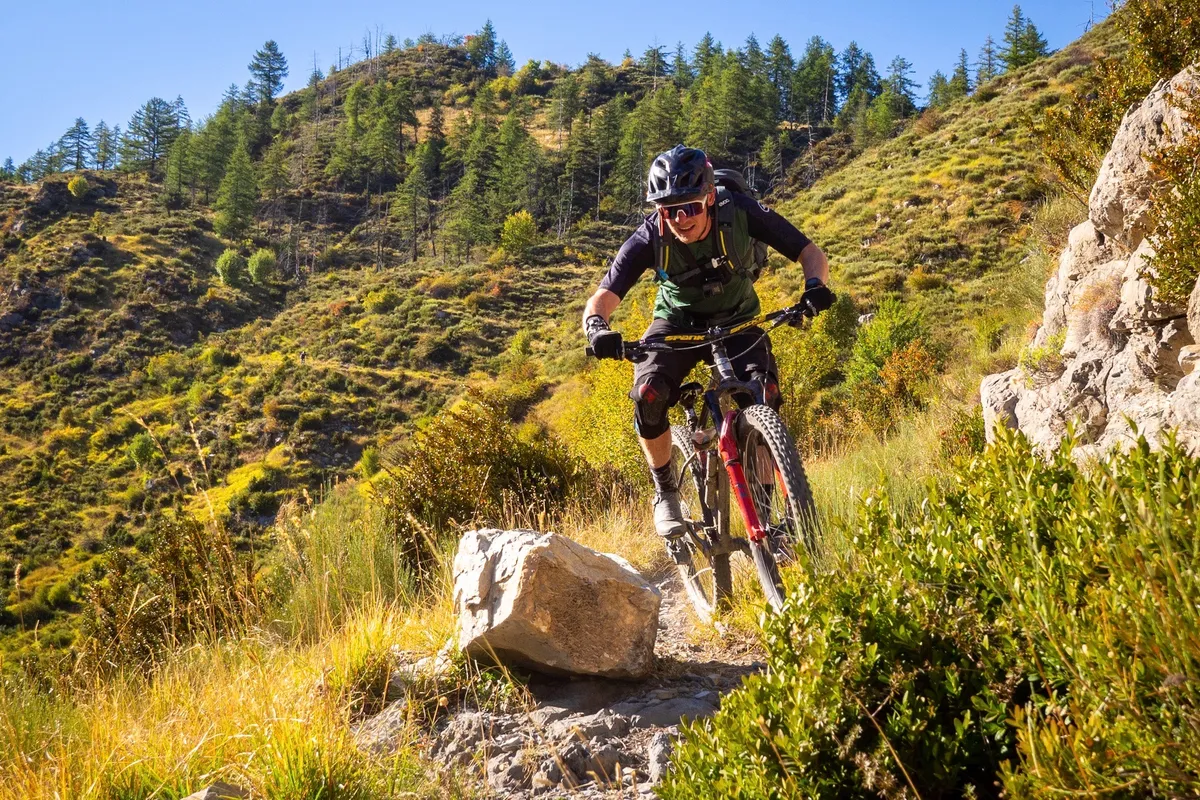
Eventually, something has to give, though. And on this trip, that was my wrists.
The first five days of our alpine traverse were dreamy. Bike and body working in perfect unison, soaking up the hits, keeping calm and stable, and living our best lives.
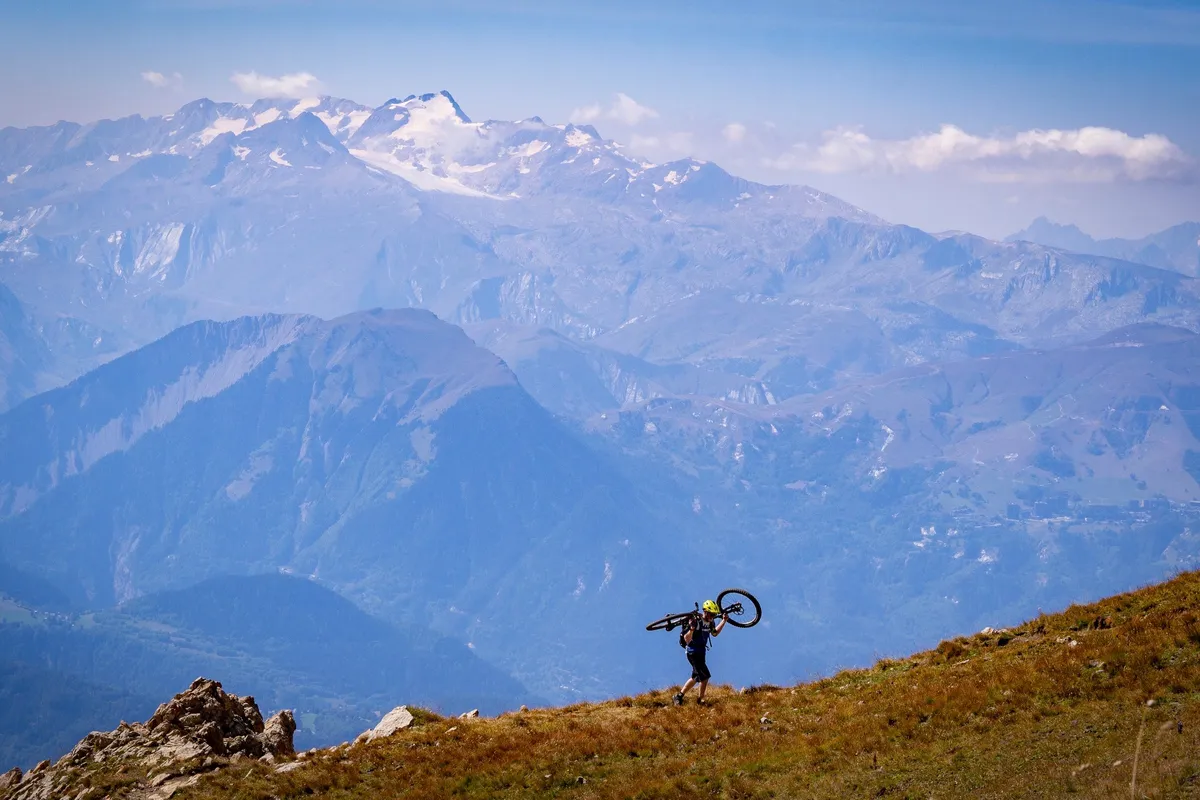
But by the sixth day, I’ll hold my hands up to say that I became a shell of my former self.
It turns out that repeated, increasingly rocky tracks do take their toll on the hardtail rider, and I started struggling to hold on.

My brakes were just as powerful as they had been all week, my tyres just as supportive and suspension as supple. But, by mid-way down a 40-odd minute rock-fest of a track I couldn’t ride more than about a minute without having to stop, shake my hands above my head, and pray for the structural integrity of my wrists.
While, visually, the suspension fork seems to suspend the bars and the frame the legs, there’s a lot of janky roughness transmitted from frame to bar, and so with the back wheel yielding no give, eventually the amount of chunder we rode over started to make its presence felt up-front.
Surprisingly, I didn’t feel quite so fatigued in my legs. The hardtail is certainly more tiring than a full-suspension, with the legs having to deal with the bulk of the trail’s impacts, as well as supporting your weight and helping muscle the bike around.
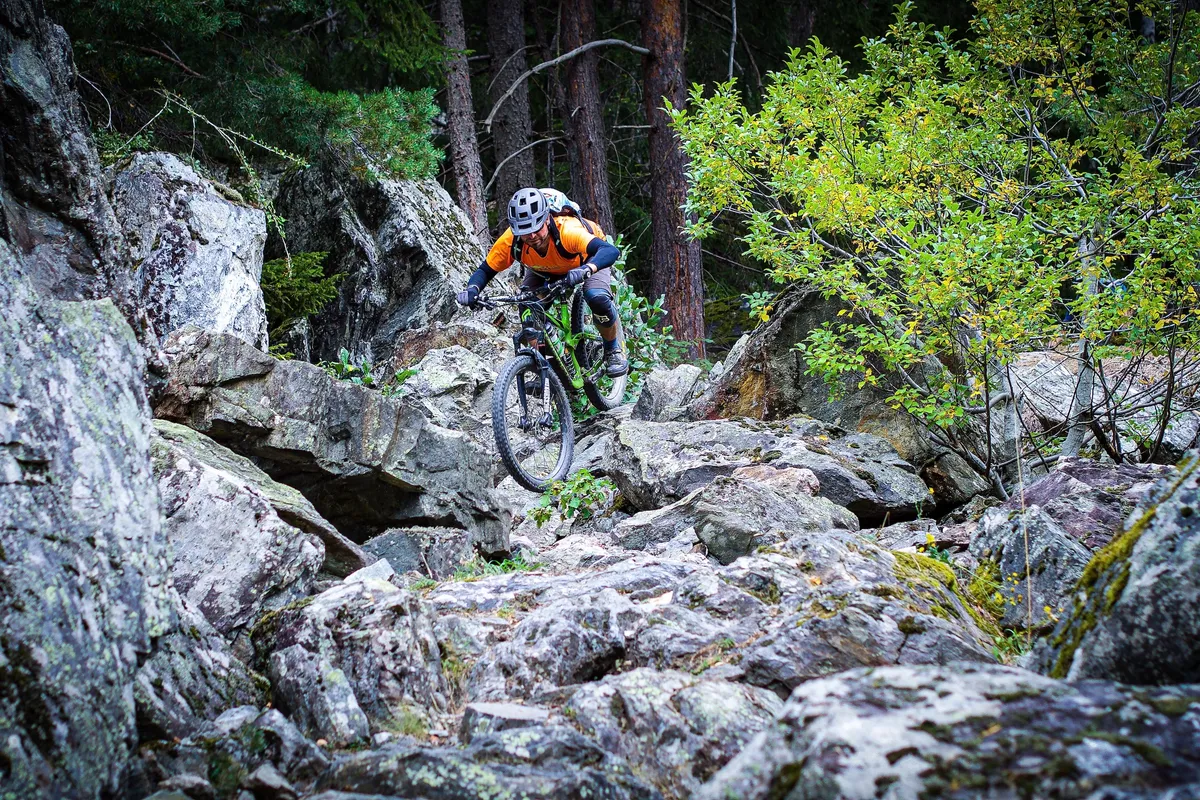
However, as one of the body’s largest muscle groups, I managed to get through the week relatively fresh in the legs department. Still, life would have been a hell of a lot smoother with a shock tucked under my top tube!
4. There’s a lot of Alp out there

There are bits of the French Alps that seem inundated with British mountain bikers from season opening to season closing – Morzine and the Portes du Soleil, and Les Arcs/La Plagne are the two that spring to mind.
And that’s great! The riding those areas have to offer is incredible – from world-class downhill runs and gnarly bike parks to some of the best natural riding around.
But having spent a week riding across the mountain range, one realises that the Alps are vast, and it only takes a little extra planning, and perhaps a bit more effort on the pedalling front, to ride tonnes of tracks that you can guarantee you’ll barely see another rider on.

Many ski resorts have growing trail networks, with at least a few lifts open to help you get high.
Even if you do stay within the confines of more recognised resorts, if you’re willing to hoik your bike onto your shoulders, you’ll be able to access tracks that the vast majority of riders will never see.
It’ll take some effort, and employing a guide is probably a very good idea, but when it comes to pints round a pub table, you’ll have some stories to tell.

5. The food (and drink) is incredible
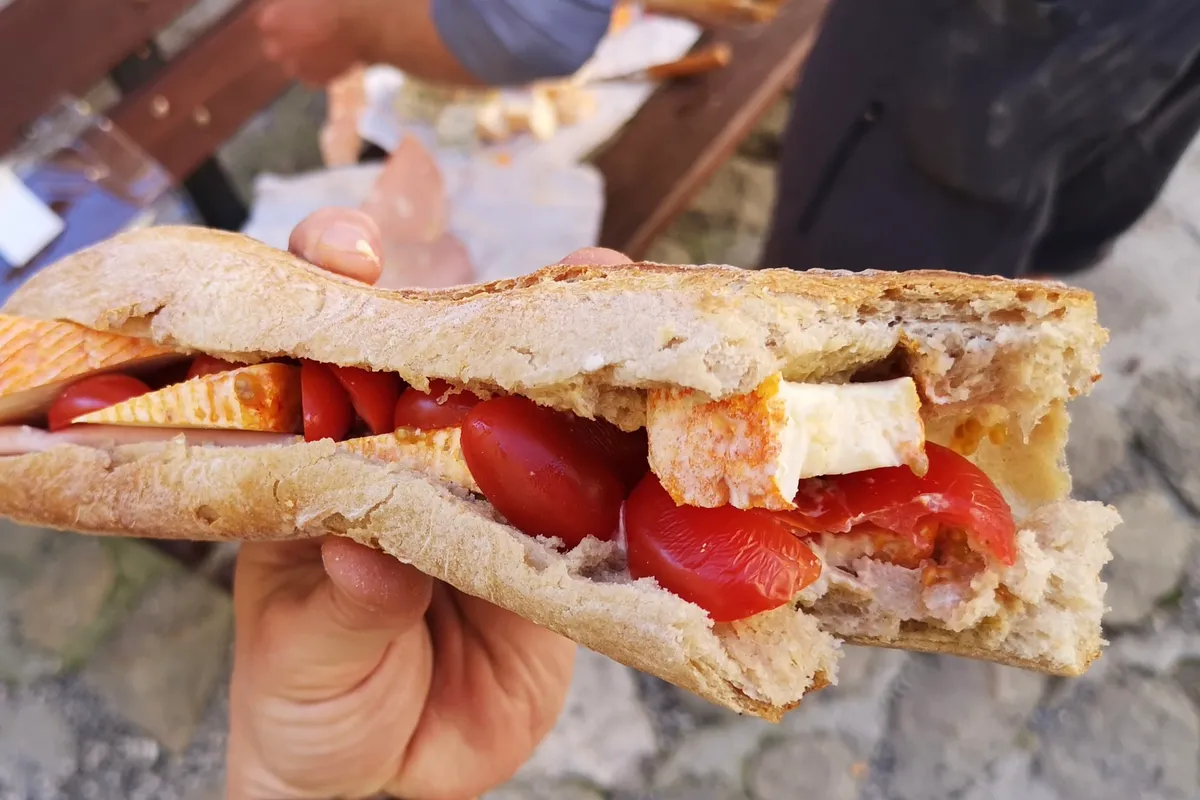
Before you do anything, you gotta eat, right? It turns out that France’s cheese game is ridiculously strong.
We all know France does cheese well, but do you know how well? It’s not just Président Brie, Saint Agur Blue and Boursin, but a whole wealth of locally produced cheese that you’ll never see on even the most gentrified high street in the UK.
On our traverse from mid- to Southern Alps, we were never more than a few kilometres from a cheese producer, with every valley having its own distinctive range of types and flavours. From nutty Tommes to creamy blue ewe’s cheeses, it feels perfectly possible to eat a different fromage from one trail to the next.
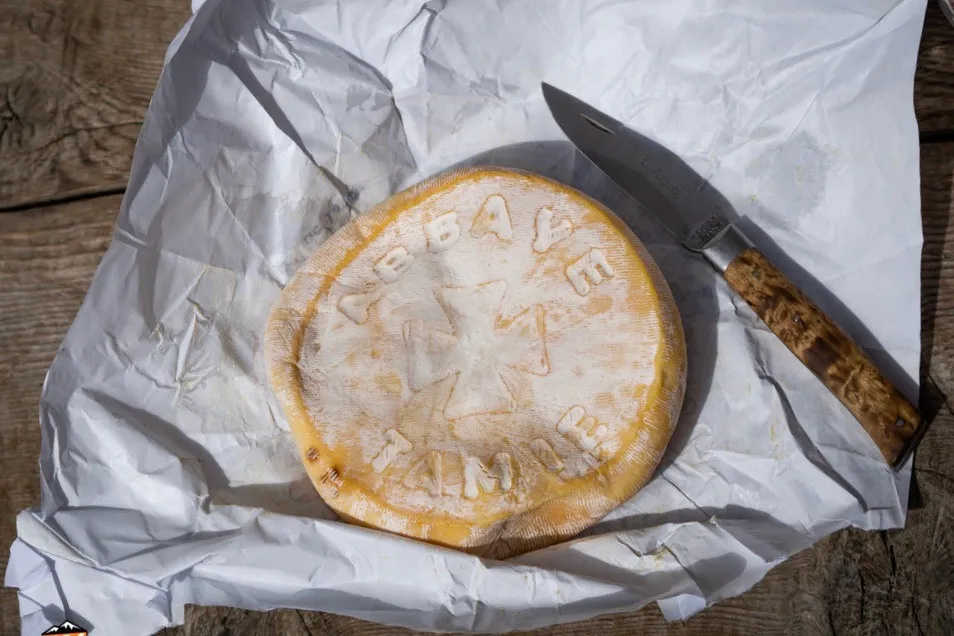
Add in freshly baked French baguettes, an almost as bewilderingly vast range of saucisson and some of the plumpest, sweetest tomatoes I’ve ever had, and you’ve a lunch made in heaven.
When it comes to drinking, you’re rarely left short either. While it’s always prudent to carry plenty of water, if you’re riding through relatively populated terrain you’ll find public basins in every village, pouring out crisp, cool mountain-filtered water 24/7.

If you like your drink a little more yeasty, the Alps seems to be full of micro breweries, and we’re not even going to touch on France’s wine list… Needless to say, France does food and drink very, very well.
So, there we have it! The five things I learnt rattling across the Alps. Big thanks to Sam from BikeVillage Holidays for putting together such an awesome trip!
